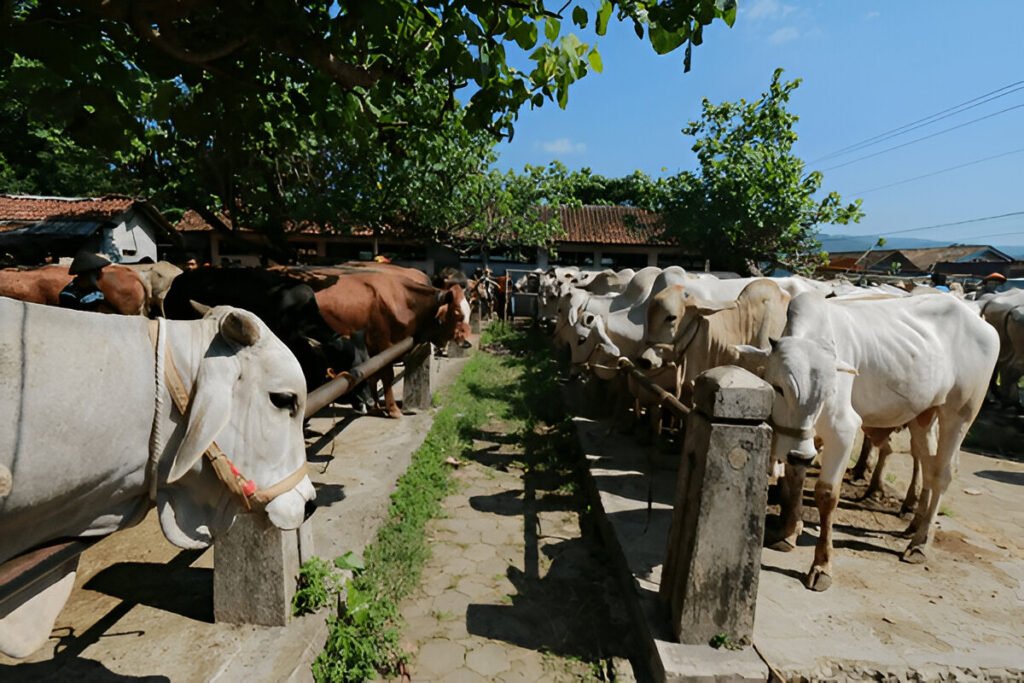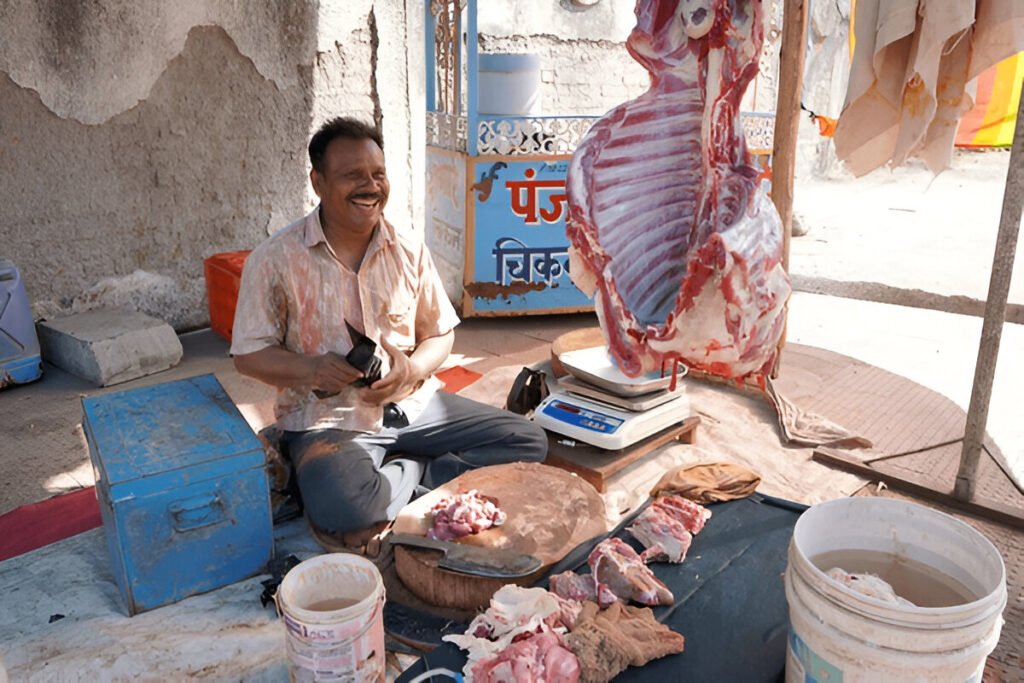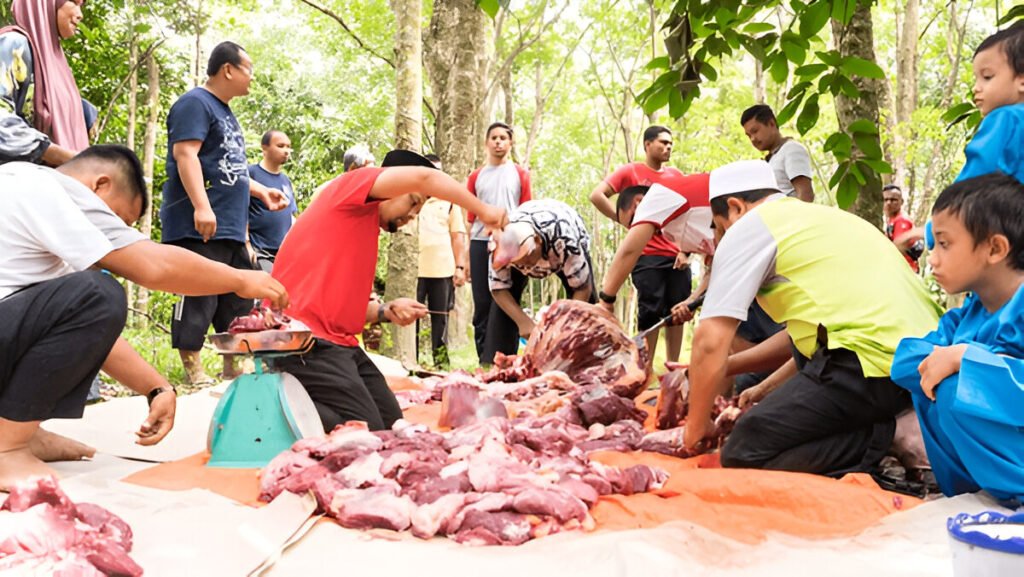
Eid-ul-Adha, a significant Islamic festival where the domestic animals are sacrificed for the name of Allah. This sacrifice of crore of animals profoundly influences any countries economy, society, and food systems. Here’s an in-depth look at its multifaceted impacts of the festival in Bangladesh.
Eid-ul-Adha, one of the most significant festivals in Islam, is not only a celebration of faith and sacrifice but also a powerful expression of social equity. At the heart of this occasion lies the act of Qurbani — the ritual sacrifice of livestock such as cows, goats, or sheep — which is deeply rooted in the story of Prophet Ibrahim’s devotion to God. But beyond the religious symbolism, Eid-ul-Adha plays a unique role in redistributing wealth and food across society.
One of the most profound teachings of this festival is the division of sacrificial meat into three equal parts: one for the family, one for relatives and friends, and one specifically designated for the poor and needy. This practice ensures that those from underprivileged backgrounds — many of whom rarely consume meat due to economic hardship — can enjoy quality food and participate in the celebration. For many low-income families, this is the only time of year when they have access to such nutrition.
In 2024, Bangladesh witnessed the sacrifice of 10,408,918 animals during Eid-ul-Adha, marking an increase of 367,106 from the previous year.
The breakdown is as follows:
Cows: 4,766,859
Goats: 5,056,719
Buffaloes: 112,918
Sheep: 471,149
From the statistic it is clear that the majority of the animal is actually cows and goats which is mainly due to the trend of animal husbandry in this region.

The statistics also shows that Dhaka Division recorded the highest number of sacrifices, while the Mymensingh Division had the lowest. This is mainly due to the number of people living in the divisions as Dhaka is the biggest and Mymensingh is the smallest. Also, the number of wealthy people living in a region is also a significant factor.

Eid-ul-Adha has evolved into a substantial economic event in Bangladesh, with estimates suggesting an economic scale exceeding Tk 100,000 crore. Approximately 13 million animals were prepared for sacrifice in 2024, with 5–5.5 million specifically raised for the festival. This surge in livestock demand invigorates the rural economy, providing income opportunities for around 1.7 million farms, predominantly small-scale and family-run.
The festival is pivotal for Bangladesh’s leather sector, the country’s second-largest export earner. About 60% of the annual rawhide supply is collected during Eid-ul-Adha, supporting an industry that exports goods worth over $1.3 billion annually.
The festival stimulates various sectors:
Eid-ul-Adha coincides with increased remittance inflows, as expatriate Bangladeshis send money home for the festival. In June 2024, remittances reached $1.46 billion in the first 12 days, contributing to rural liquidity and consumption.
The mass slaughter during Eid-ul-Adha leads to a temporary surplus of meat, affecting consumption and distribution:
Meat Distribution: Traditionally, meat from sacrificed animals is divided into three parts: one for the family, one for relatives, and one for the poor, promoting community sharing.
Price Stabilization: The influx of meat can lead to short-term price reductions, making protein more accessible to lower-income groups.
Cold Chain and Storage: Increased demand for refrigeration and storage solutions arises to preserve the surplus meat.

Entrepreneurship: The festival encourages entrepreneurial activities, with individuals investing in livestock rearing months in advance, viewing it as a form of savings or investment.
Skill Development: Temporary employment during the festival allows individuals to acquire skills in animal husbandry, butchery, and logistics.
Cultural and Social Cohesion: Eid-ul-Adha fosters a sense of community through shared rituals and charitable practices.
While the festival brings numerous benefits, it also presents challenges:
Environmental Concerns: Improper disposal of animal waste can lead to sanitation issues.
Market Volatility: Inflation and fluctuating livestock prices can affect affordability for consumers and profitability for farmers.
Animal Welfare: Ensuring humane treatment and slaughtering practices remains a concern.
In summary, Eid-ul-Adha significantly influences Bangladesh’s economy, particularly in rural areas, by boosting various sectors and promoting social welfare through charitable practices. However, addressing the associated challenges is crucial for sustainable and equitable benefits.

However, in 2025 the economic scenario is going to change as due to restriction of Indian animals to enter Bangladesh, the local farmers are going to have a better opportunity to sell their animals which was not been able for the last decade. Read this article for details on how this issue is going to impact Bangladesh and India Economy.